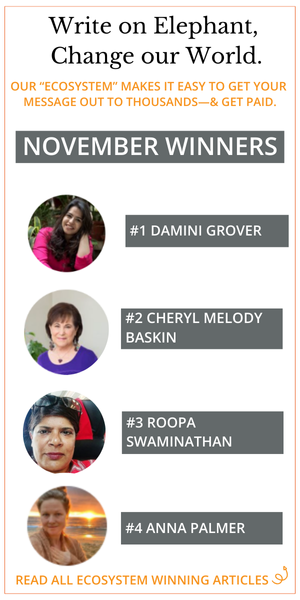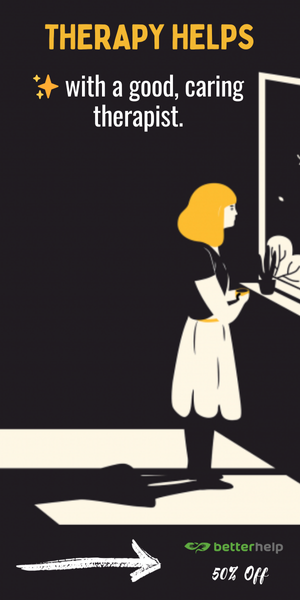View this post on Instagram
This high achiever went from nonstop hustling to a more mindful life.
Burnout is a hot topic, given its official status in the World Health Organisation’s International Classification of Diseases as of May. While I’m not big on labels, I’ve spent the past six years un-training myself from living and working in a constant state of overwhelm, which could easily be classified as burnout. Now, I coach people on the same.
Bouncing back isn’t about quick fixes, but rather, a constant commitment to prioritising our well-being. I want to share what led me into burnout in the first place and the specific strategies that helped me recover.
The Path to Burnout.
“It is no measure of health to be well-adjusted to a profoundly sick society.” ~ Jiddu Krishnamurti
~
My training in public health makes me acutely aware that health and illness is either helped or hindered by our community, societal, and cultural norms.
And the modern world of work is not set up to nurture our well-being. Consider the case of the typical office worker who trudges to work on a train packed full of people, to sit inside a dull, grey cubicle for over eight hours, with limited natural movement, kept stimulated by fluorescent light, and who takes a short break for fresh air at lunchtime if she’s lucky.
Consider also the language of the world of modern work. We strive to “maximise efficiency” and chase after “productivity gains.” We pride ourselves on being productive, then push through when we’re sick. We are living, breathing beings who best thrive in a continuous rhythm of work, rest, and play—yet we operate more like machines. And for the most part, we unconsciously accept this reality.
So, bear in mind that the tendencies I speak to below come out of this context. Whereas the Western medical model puts the onus on the individual, I’m careful in my own work to recognise the wider norms that shape us. It’s unhelpful—and inaccurate—to simply blame ourselves.
My Experience.
When I deconstruct it, I think I circled into burnout twice. First, in my early 20s, when I was working full-time, studying, doing over 20 hours per week as a volunteer coordinator on an emotionally taxing cause, as well as running a shared house, and all the other demands of a busy life. The second, perhaps worse time, was as I progressed up the career ladder as a busy manager in health. But some people manage these things, and plenty more, without burning out. So, why did I?
Equating productivity to self-worth.
It’s not surprising that I, like many of us, internalised the cultural narrative that being productive makes for a good person. My family story goes like this: at age three, my mum was surprised to find I wasn’t just play-reading my big sister’s school books, I could actually read the words aloud. I quickly became one of the “good students” in primary school, often called upon to share my answers with the class. I learned early on that producing good work was a way to be seen and acknowledged.
Working on social causes for much of my career added an extra dimension. As a fellow purpose-driven colleague said to me just yesterday, “If I don’t turn up to work, the school kids don’t get fed that day.” In this environment, you’re driven by meeting a social or environmental need. This adds further pressure, even though it takes a personal toll.
Lacking an “off” switch.
For a long time, I just assumed I didn’t have an off switch. I’d become so used to working hard, producing results, being valued, then taking on more responsibility, which meant I then had more to keep up with, that it started to feel natural to be in constant doing mode. It felt like my physiology, my body, actually got used to it to the point that it felt normal.
Later on, I learned that this has a lot to do with our stress physiology (aka fight, flight, and freeze) and the extent to which our nervous system is regulated. Simply put, I became used to living in a state of constant stress and pushing past my body’s signals encouraging me to slow down.
The other reality here that a lot of us can relate to, whether we are consciously aware of it or not, is that losing ourselves in that constant mode of doing is often a cover up—a way of distracting and numbing ourselves from what we don’t want to feel.
Feeling like an imposter.
Like many women, I also struggled with feeling like an imposter. This was particularly the case early on in my career when I was thrown in the deep end with roles of increasing responsibility and had to learn to swim, fast.
In my university days, I spent days tweaking, refining, and perfecting my assignments. In the world of work, I quickly learned the necessity of moving fast—thinking on my feet and getting things done rather than making them perfect. But still, I spent significant effort and energy trying to anticipate and then over-deliver against imaginary, mile-high expectations. This meant a lot of time and wasted energy preempting, rehearsing, overanalysing, worrying, and trying to control. It also meant I tended to downplay the positive feedback I often received that disproved my imposter theory.
Playing out this pattern, over time, becomes exhausting. It sucks you out of presence, and saps the fun and spontaneity out of not just work, but life.
The Long Road Back to Well-Being.
So, what does it take to find our way back to well-being?
There really were no quick fixes, and it’s still a work in progress for me. Dropping the relentless self-pressure and stress, and moving toward greater well-being and ease has been a daily commitment and choice.
Here are four things that I’ve found crucial in the past six years:
1. Declaring my well-being as a top priority.
First and foremost, I made a conscious commitment to make my well-being a fundamental priority. I continue to make this commitment and choice daily. This is a bold act in our modern world, and we can all find reasons why it’s too hard. I was no different.
It has meant making intentional and sometimes difficult decisions that fly in the face of cultural norms. One such decision was to take sideways, rather than upward, steps on the career ladder.
I was regularly told of my potential, and people often couldn’t understand why I wouldn’t accept the management roles on offer. Instead, I chose roles that were more junior than I was capable of, but that gave me better life balance, and more time and energy.
I had to be crystal clear on my values, and courageous enough to put them into action. Following this path challenges the norm. Whilst a little unnerving at first, I held strong to my values and over time found that my fears about status, money, and others’ judgement became irrelevant.
2. Taking heed of my body’s signals.
We live in a culture where logical thinking is revered above all. From the moment we’re born, we learn to use our mind to drive us, and largely tune out from our body’s signals, living as if we’re cut off below the neck.
I’ve had to deliberately learn how to reconnect with the rest of my body. This literally means spending time noticing physical sensations—the tightness in my chest, the tension in my calves, the expansive feeling in my stomach—and tuning in to the information that provides.
I’ve learned to take heed of these signals. Which means, for example, resting at the earliest opportunity when I fall sick. This is vastly different to “pushing through” at work, buoyed by all the over-the-counter medications one can get their hands on.
I also try my best to ride the wave of work, rest, and play, following bursts of hard work with sufficient down time to replenish myself. We all know how fruitless it is to try and get ourselves to be productive when we’re feeling anything, but I use my most “productive” hours (mornings) to do my most creative, strategic work. And the more sloth-like times (afternoons) for more menial tasks.
I still work hard and get great results. I just allow myself to work in a rhythm that recognises how my energy levels fluctuate.
3. Getting educated on stress physiology.
On a related note, but worth highlighting as its own point, is getting up to speed on the fundamental role our nervous system plays in our experience of well-being. As someone who’s dealt with the impact of having a hyperactive nervous system most of my life, this has been an absolute game changer for me. And it’s crucial for anyone experiencing overwhelm, stress, burnout, anxiety, or trauma.
For me, this involved working with a nervous system educator to:
>> Understand the theory of stress physiology (fight, flight, or freeze).
>> Learn to differentiate between the experience of safety (also known as a well-regulated nervous system) versus stress (dysregulation).
>> Learn strategies to increase safety (regulation).
That constant doing mode I mentioned earlier? It’s a classic sign of a dysregulated nervous system. Had I learned this sooner, I’d have saved myself an incredible amount of suffering.
4. Relentlessly challenging the stories of my mind and society.
This is a big one, and a continual practice. We’re surrounded by the stories of our society, family, and self. It’s the nature of the human condition.
Choosing to prioritise my own well-being has meant being willing to move from blindly accepting into questioning the stories that make me vulnerable to burnout in the first place.
Society’s stories have us believing that we’re only as good as what we produce. They tell us that the nine-to-five hustle is normal (rather than an arbitrary standard from the industrial revolution), and that there’s something wrong with us if we can’t perfectly juggle that and all of life’s other demands.
Our social self is the side of us that seeks to please and fit in with others. It tells us we need to keep our bosses happy, we can’t say no to extra responsibilities even though we’re stretched, and that we have to give 110 percent to everything we do.
And our internal stories are perhaps the stickiest of all. These stories have us convinced that we can only succeed if we push ourselves, and of all the catastrophes that could occur if we take a day off.
Left unchecked, these stories keep us stuck. Getting unstuck requires a relentless commitment to tearing them down, one by one, and creating new truths that support our well-being instead.
The Silver Lining.
Taken together, these steps have allowed me to rebuild myself and my well-being, and start living and working with far less pressure and far more ease.
And there’s always a silver lining. For me, it’s the space that this journey created to uncover an even deeper purpose, which has led me into coaching. Coaching clients on this topic invariably involves a rethinking or deepening of their life purpose too.
What silver lining might be waiting in the wings for you?
~


 Share on bsky
Share on bsky




Read 8 comments and reply